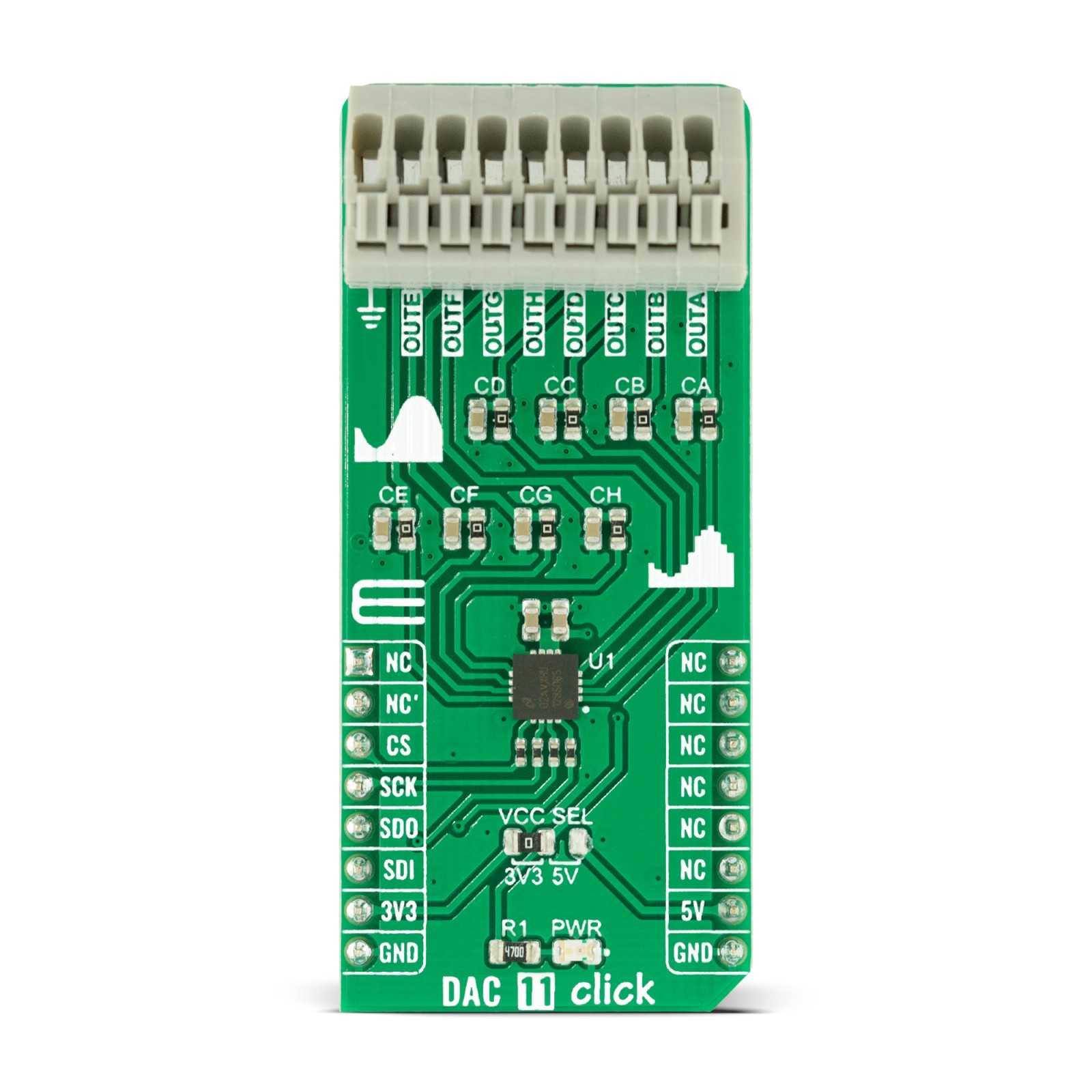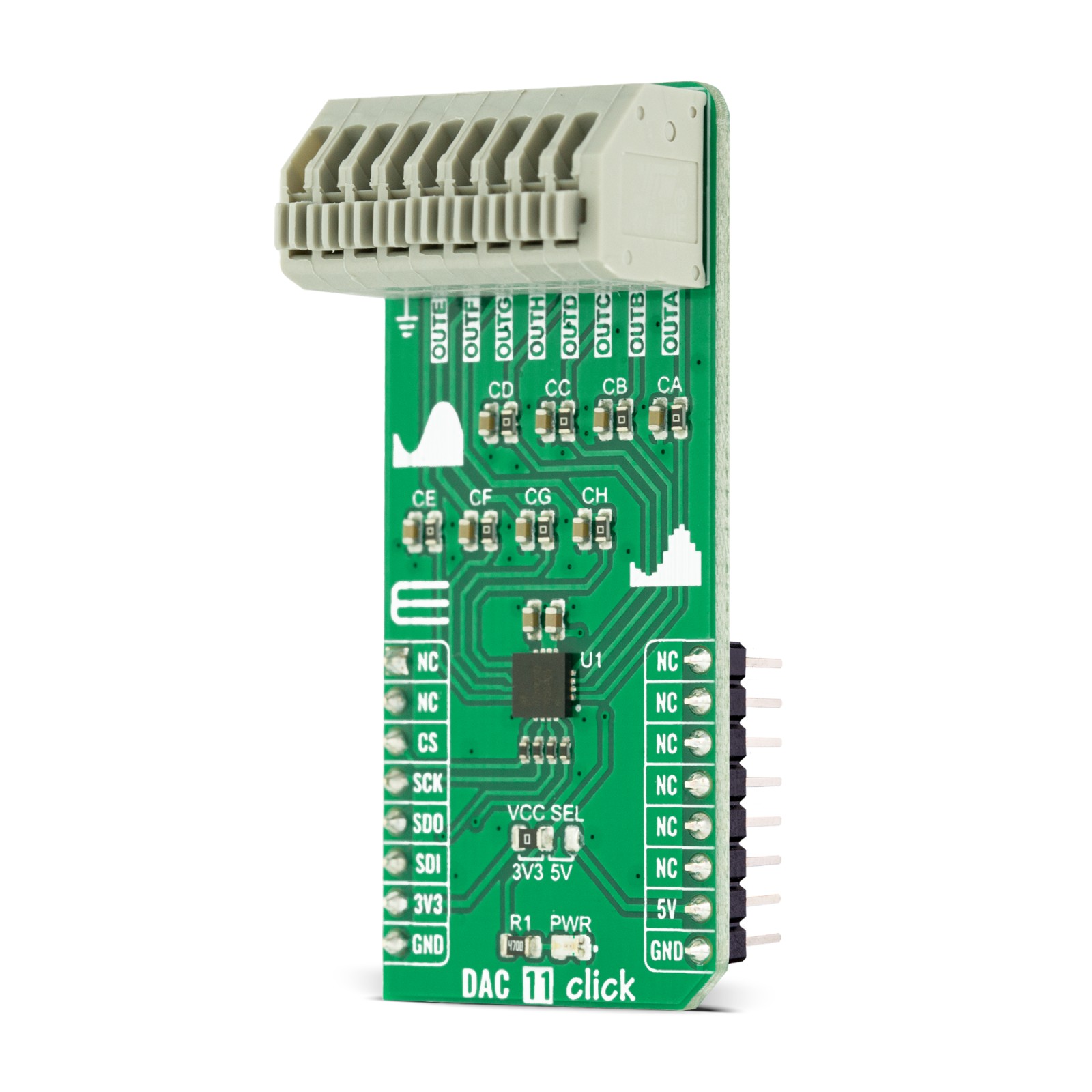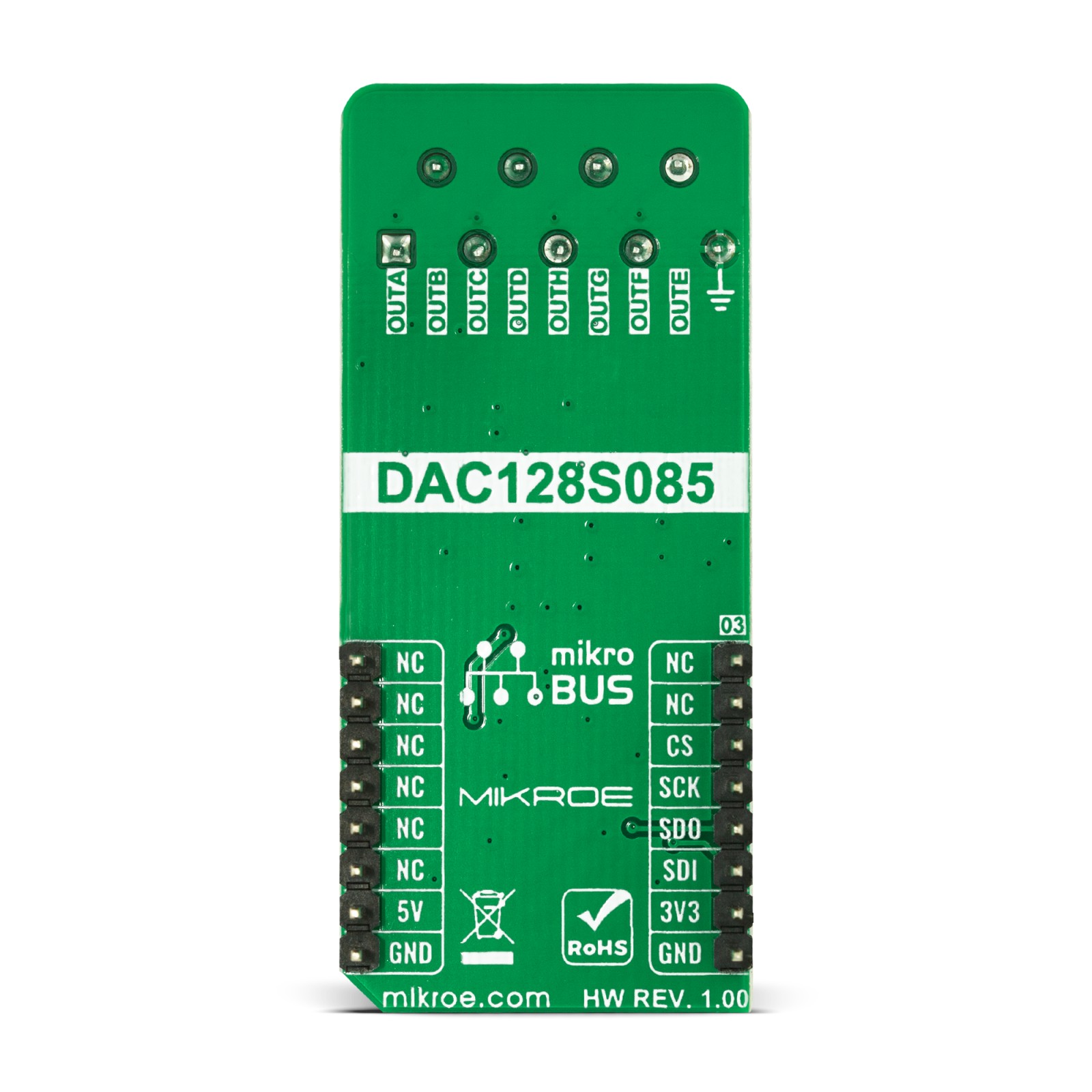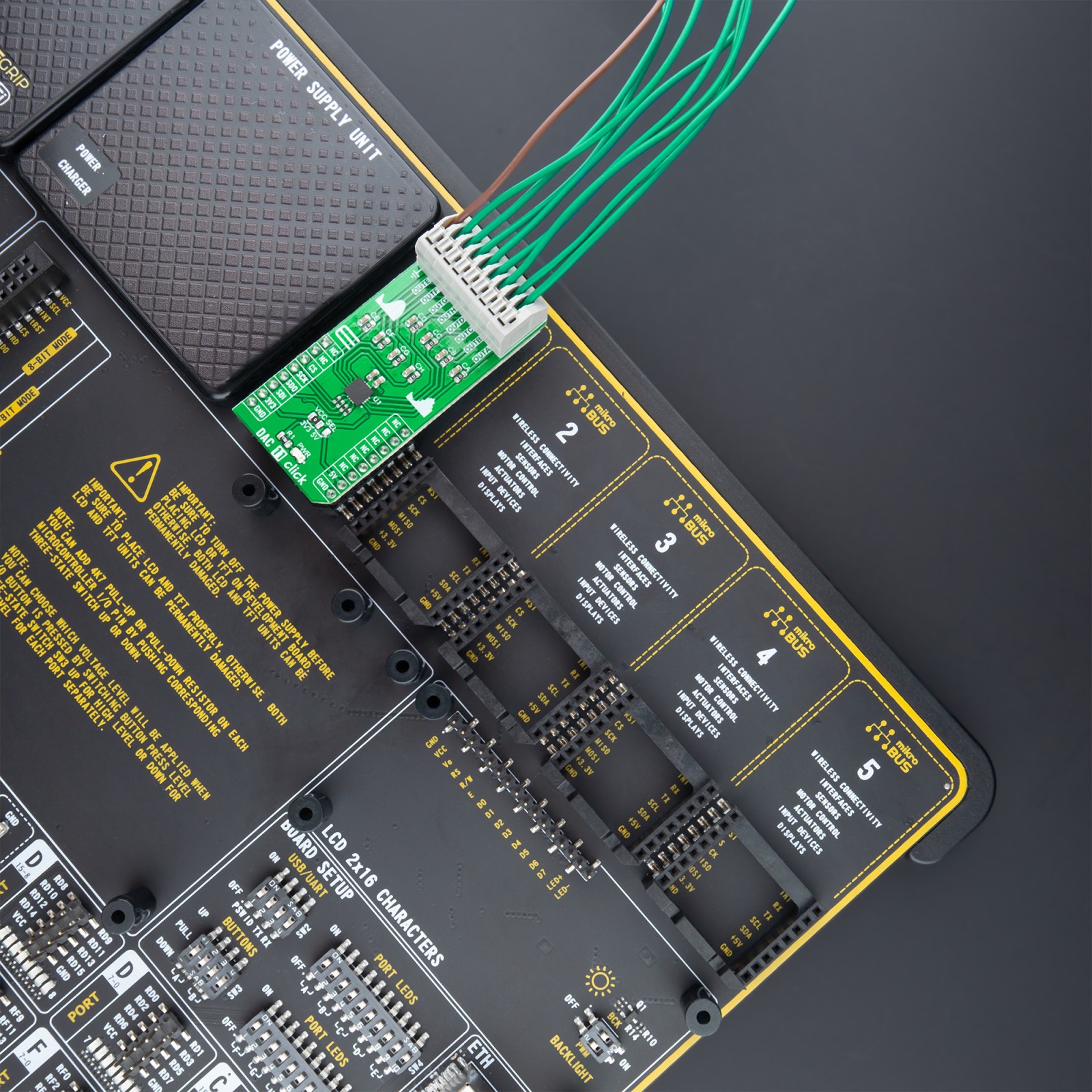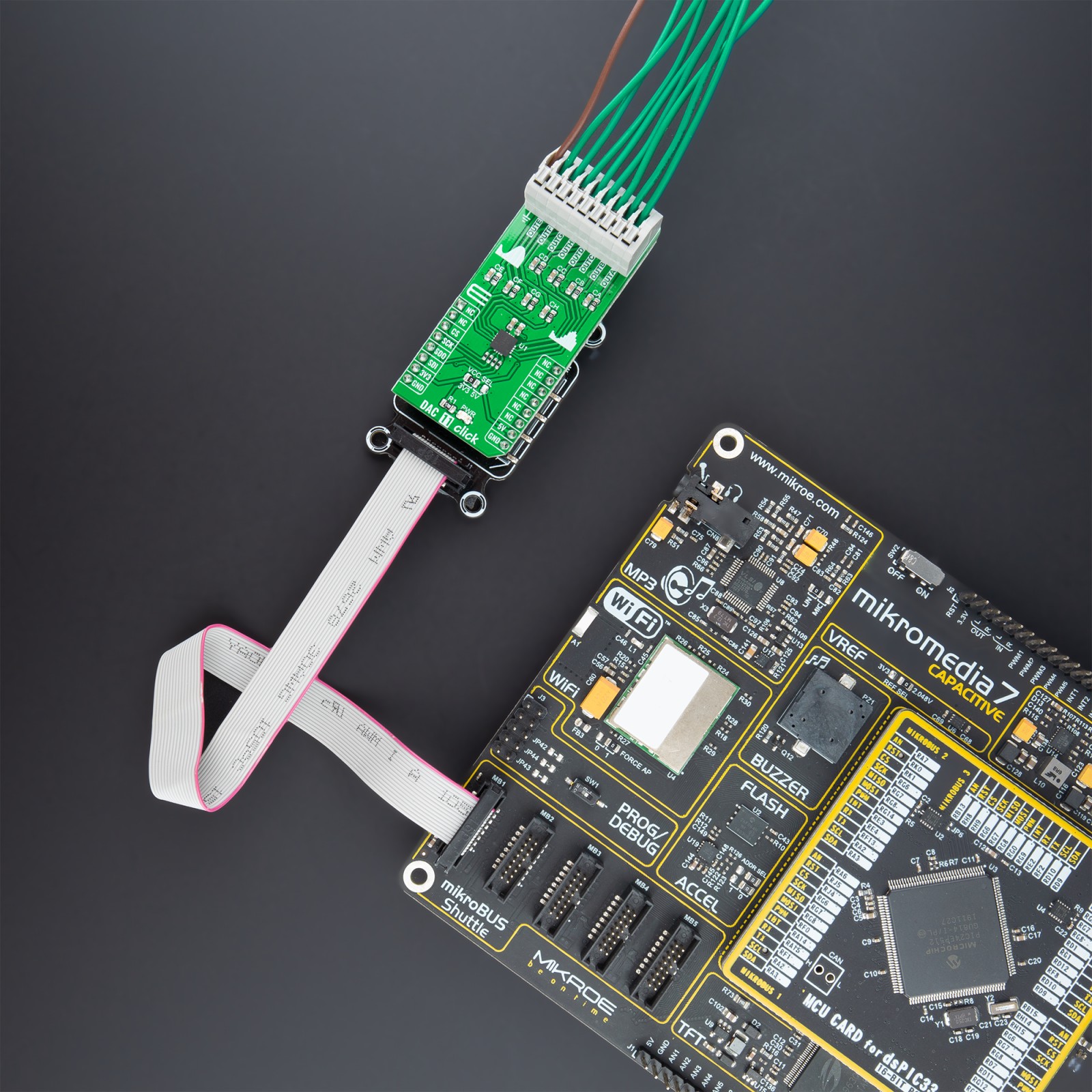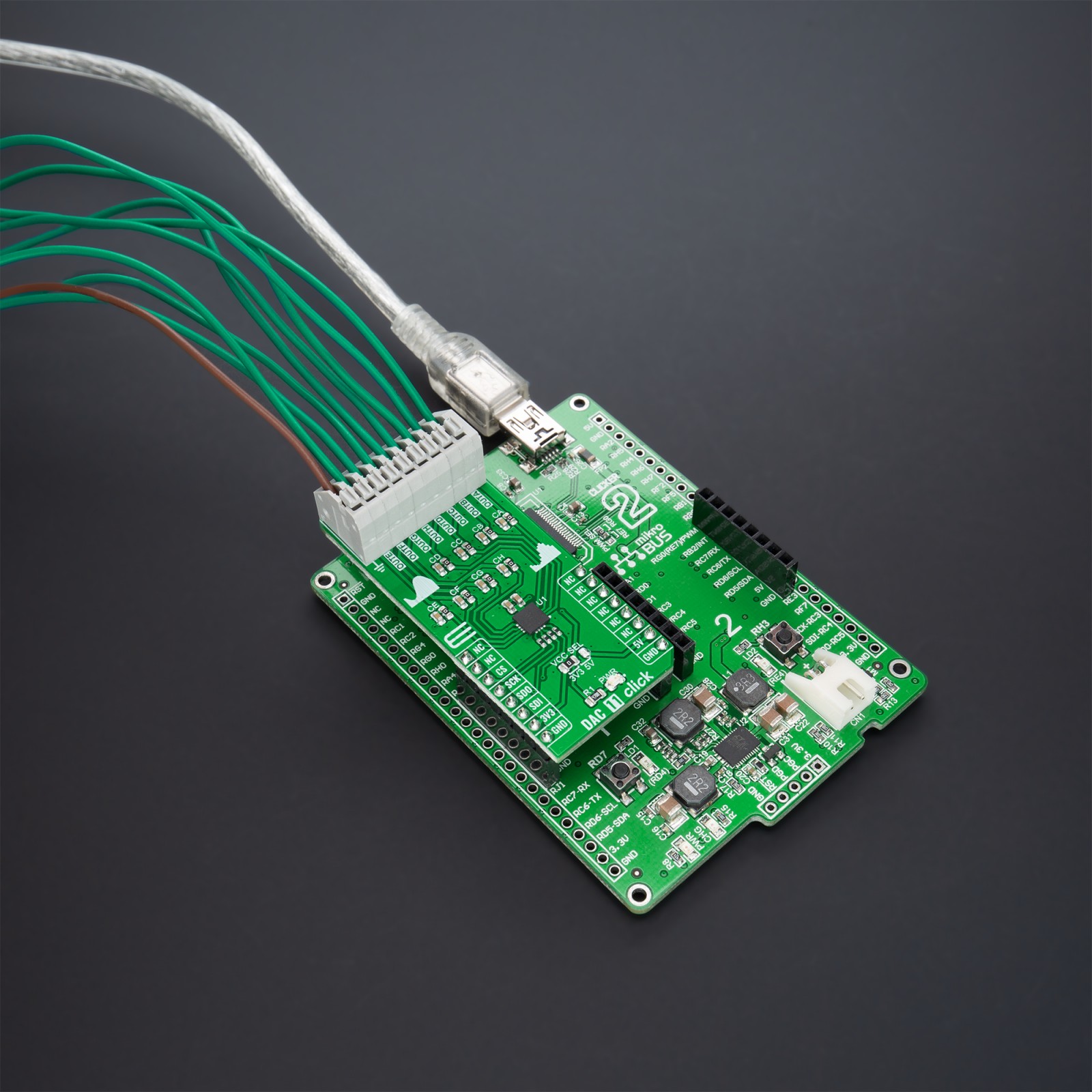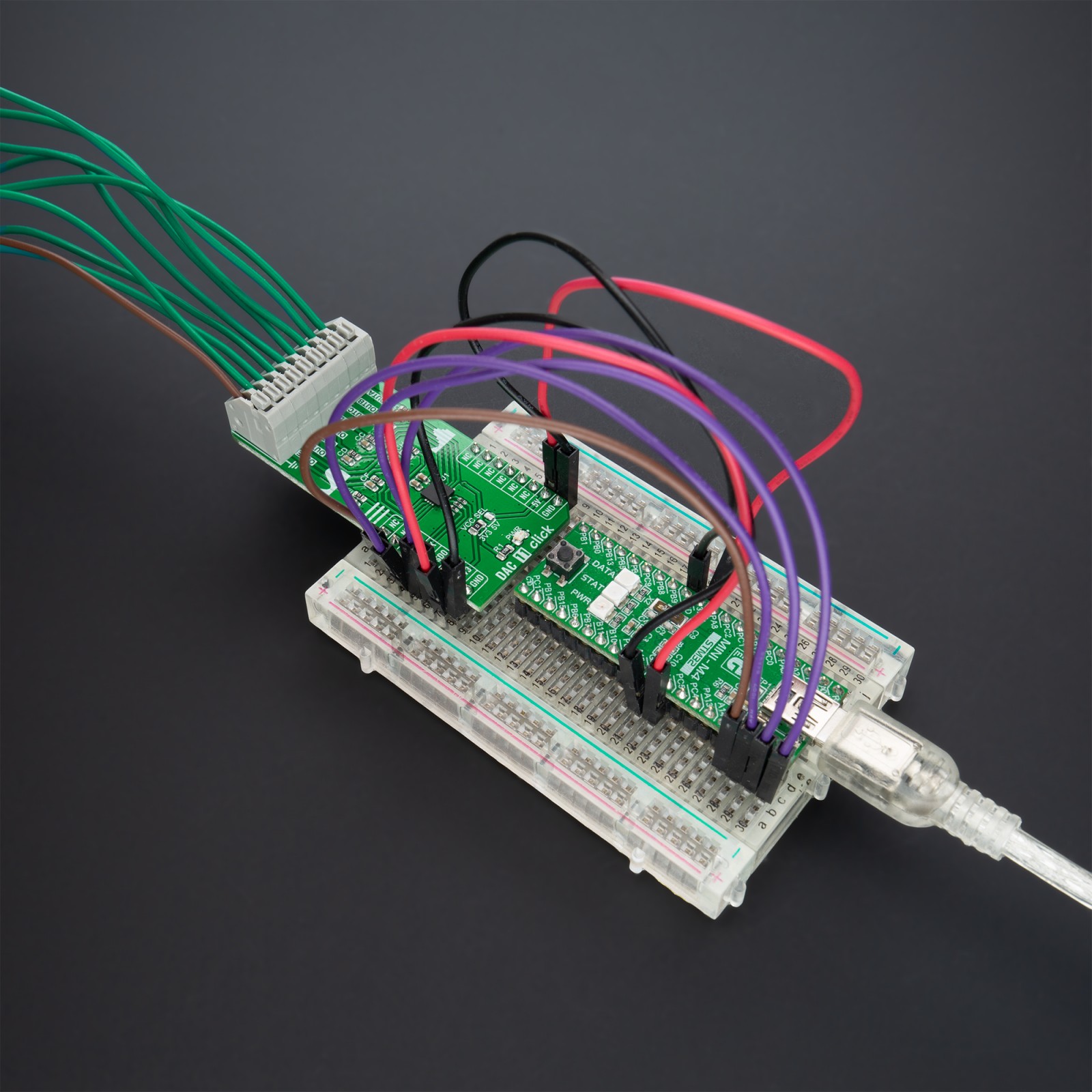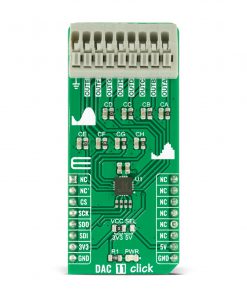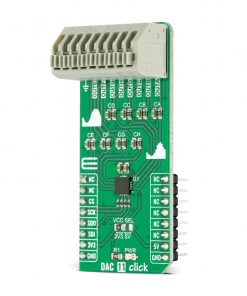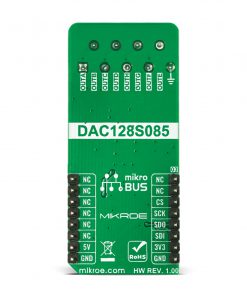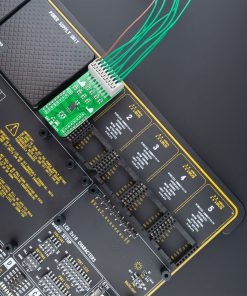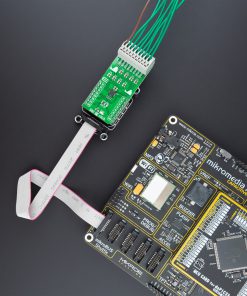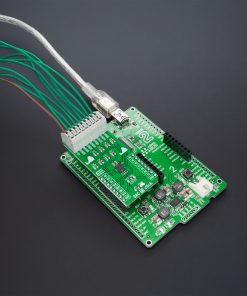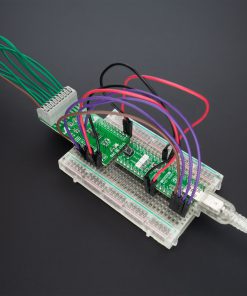DAC 11 Click
R505.00 ex. VAT
DAC 11 Click is a compact add-on board that contains a highly accurate digital-to-analog converter. This board features the DAC128S085, a general-purpose OCTAL 12-bit analog voltage-output DAC from Texas Instruments. It uses both logic voltage levels from the mikroBUS™ socket with a maximum power consumption of 4.85mW at 5V. The on-chip output amplifiers allow rail-to-rail output swing, supporting the SPI serial interface (compatible with standard QSPI, MICROWIRE, and DSP interfaces), which operates at clock rates up to 40MHz. This Click board™ represents an excellent choice for digital gain and offset adjustment applications, programmable voltage and current sources, programmable reference, and many more.
DAC 11 Click is supported by a mikroSDK compliant library, which includes functions that simplify software development. This Click board™ comes as a fully tested product, ready to be used on a system equipped with the mikroBUS™ socket.
Stock: Lead-time applicable.
| 5+ | R479.75 |
| 10+ | R454.50 |
| 15+ | R429.25 |
| 20+ | R413.09 |

